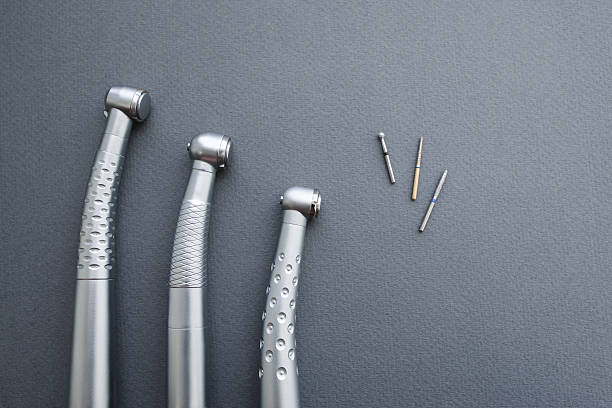Dentists use dental hand pieces with several rotary attachments like steel burs to make sure that the patient is comfortable. It also enables them to perform successful treatment.

The right tools also help the dentist reduce the treatment time and carry out the various procedures efficiently.
Of these tools, dental burs are critical instruments. They are also called cutters or drills.
There are different types like carbide, steel, and diamond burs. Dental drills are used along with a hand piece to cut the tooth’s structure while preparing it for a cavity.
Parts of the bur and their significance
This instrument has five important features. These are:
- The grip of its shank
- The composition of its head
- The shape of the head
- The function is meant to perform
- The handpiece it fits
The grip indicates the way its shank is fitted into the hand piece and is available in several sizes. You can find the helpful and essential list of dental lab products and its features on this awesome wide range dental product supplier. The composition of the head can vary. While latch grip drills are composed of steel, the fiction grip type is tungsten, diamond, or carbide. The long shank variety used in surgical procedures is made of steel and those used in the laboratory are stainless steel. The shape and utility of these instruments are interconnected as the function depends on the shape.
For example, in carbide burs, the rose or round head is used by dentists to cut and remove caries. Pear-shaped heads are used to shape the cavity to prepare it. The fissure head shapes and prepares the cavity. The fissure heads can be tapered, round, or pear-shaped.
Acrylic and bone cutters come with rough open blades. Plug finishing drills used in minute trimming for tooth restorations have several fine blades.
Diamond burs are more preferred for their superior efficiency in high-speed handpieces and are available in many shapes and sizes.
Choosing the right one
Dentists choose the size and shape of the head based on how they want to prepare the tooth cavity and the procedure they plan to perform and usually prefer low speed, single-use instruments. This helps them perform the procedure with precision.
For a particular type of cavity, the doctor usually uses the same type of drill. While using mandrels, un-mounted stones or discs are attached with a screw or friction grip cutter to be used with a handpiece.
Maintaining the instrument
Whether they are, diamond, carbide, or steel burs, they must always be kept sterilized and clean. At the first sign of wear, they must be replaced as they might lose their efficiency. Diamond burs are cleaned in ultrasonic baths and placed in a specific stand meant for them to prevent them from bouncing in the bath and becoming damaged.
They are cleaned gently with a nail brush. These drills or cutters can also be cleaned with a rubber eraser to remove dirt without damaging them. Steel burs are also cleaned the same way and autoclaved to sterilize them.
Since the dentist depends on the appropriate hand pieces and equipment to treat the patient, getting good quality dental supplies from a reputable supplier is critical.



